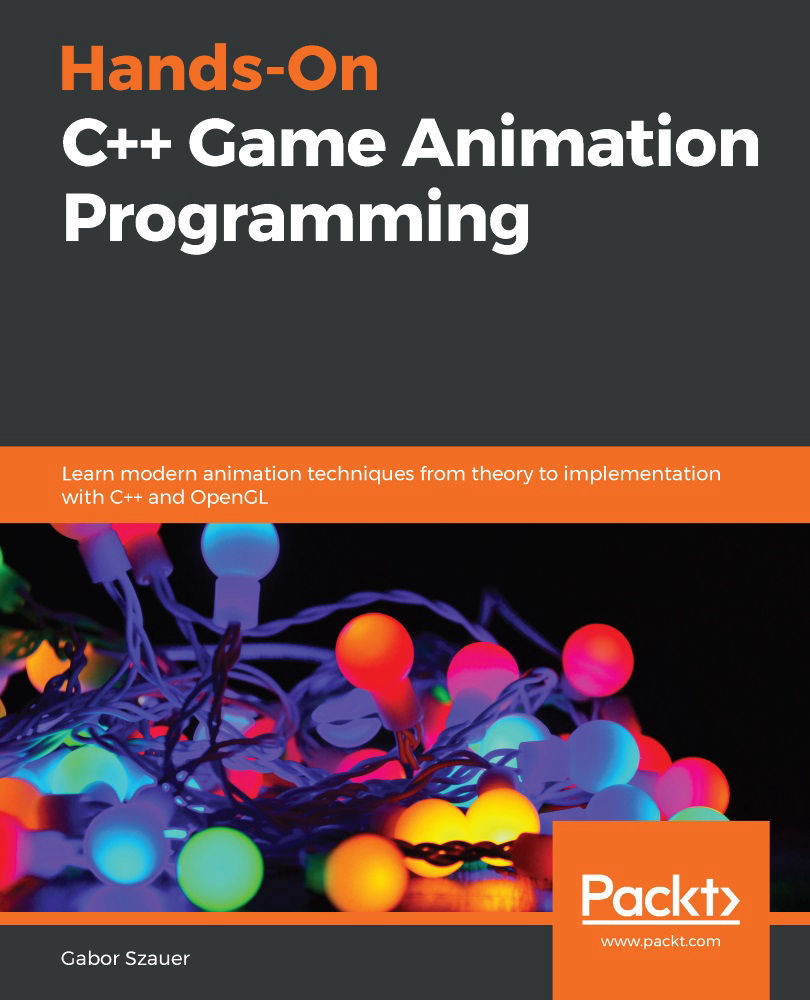Summary
In this chapter, you learned how to write an abstraction layer on top of the OpenGL API. For the most part, you will be using these classes to draw things throughout the rest of the book, but a few stray OpenGL calls might find their way into our code here and there.
Abstracting OpenGL in this fashion will let future chapters focus on animation without having to worry about the underlying API. It should be straightforward to port this API to other backends as well.
There are two samples for this chapter—Chapter06/Sample00, which is the code used up to this point, and Chapter06/Sample01, which shows a simple textured and lit plane rotating in place. Sample01 is a good example of how to use the code you have written so far.
Sample01 also includes a utility class, DebugDraw, that won't be covered in this book. The class is found in DebugDraw.h and DebugDraw.cpp. The DebugDraw class can be used to draw debug lines quickly with a simple API. The DebugDraw class...







































































